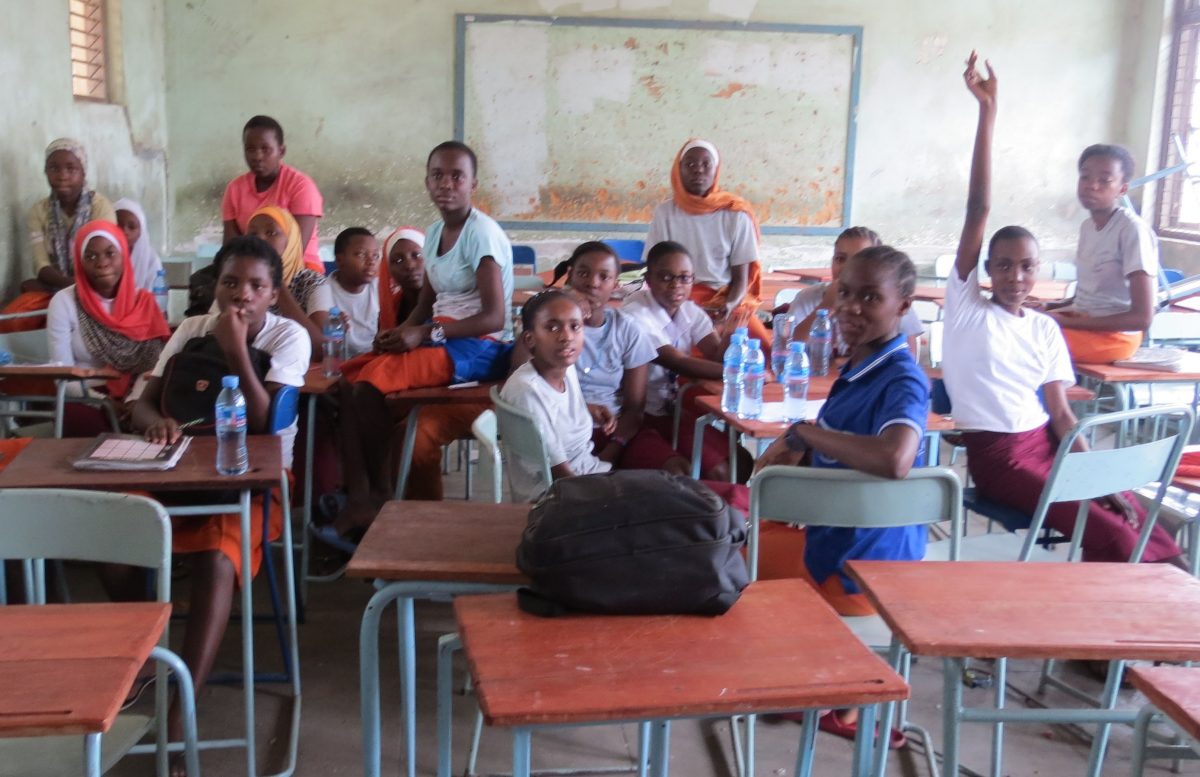Scope
A combined total of 43 girls participated (20-Jangwani, 13-Makongo and 10-Zanaki) in the workshops took place concurrently on Saturday August 13th, 2016 and lasted 3-4 hours. Each school designated one teacher to provide support to facilitators before and after the workshop. Facilitators led each workshop using the Facilitators Guide (Appendix A) with slight variations; while sustaining the overall objectives and methodological approach.
Objectives
- Create an enhanced feminist consciousness and self-awareness among 60 adolescent girls on their sexuality, especially autonomy over their bodies, and thoughts;
- Discuss ways in which traditional norms that ‘normalise’ unsolicited sexual advances and sextortion that in invariably lead to (and/or inaction against) sexual violence (and initiate girls to subscribe to that ‘normalisation’);
- Use short stories and poetry to express girls frustration and condemnation of all acts of unsolicited sexual advances and sextortion they have experienced and/or have intimate knowledge about;
- Document the workshop through pictures and videos to be used on social media and exhibition at the public event.
Process and Outcomes
At the end of the workshop, participants were able to:
- Share personal experiences and close to home accounts on unsolicited sexual advances, sextortion and sexual violence.
- In one school participants identified various words commonly used obscenely to degrade women (mostly referring to female body parts and vulgar sexual acts). Majority of participants stated that they learned at least 2-3 new words that they had never heard before, which demonstrated how prevalent this phenomenon is in diverse social milieu. They also discussed how boys and men (and some women) frequently use those words without shame unlike obscene words directed at men and/or referring to male body parts which are fewer and often directed to those purported to practicing same sex relations mimicking the female role.
- Participants discussed the following:
How traditional norms allow the aforementioned acts to continue to take place at the expense of girls’ and women’s dignity, comfort and safety—the recurring theme was that girls are raised to be quiet and not speak up and boys are raised to be aggressive and take charge of everything surrounding them. This leads to boys acting aggressively toward girls and the latter lacking the confidence to take an independent stance. Moreover, instead of condemning the formers behaviour, society rewards boys by looking the other way and blaming girls for the outcomes of such behaviour.
What actions each participant took or wanted to take and factors that contributed to them not taking appropriate action or simply not speaking up at all–there was consensus in all schools that the majority of girls do not report these acts because they feel ashamed or blame themselves for ‘allowing” such incidents to happen to them. In some cases, girls feel obliged to protect their family’s honour by remaining silent. The situation is worse when the perpetrator is a family member in which case the entire family may conspire to keep the incident secret. Even when cases of sexual abuse are reported, often society opts not to believe the victim; making them experience further victimization.
How society responds to anyone who speaks up against these acts—more often than not, when the victim is brave enough to speak up, society does not believe them, tries to suppress the truth, trivialises the issue, blames the victim, and sometimes shames and stigmatizes the victims. This forces many girls and women to suffer in silence.
What actions should be taken by parents, teachers, policy makers and society as whole so as to create a safer environment for girls and women—denounce and reject any traditional norms or taboos that perpetuate these acts; implement and enforce rules and regulations that punishes anyone who commits any acts of violence towards girls and women.

